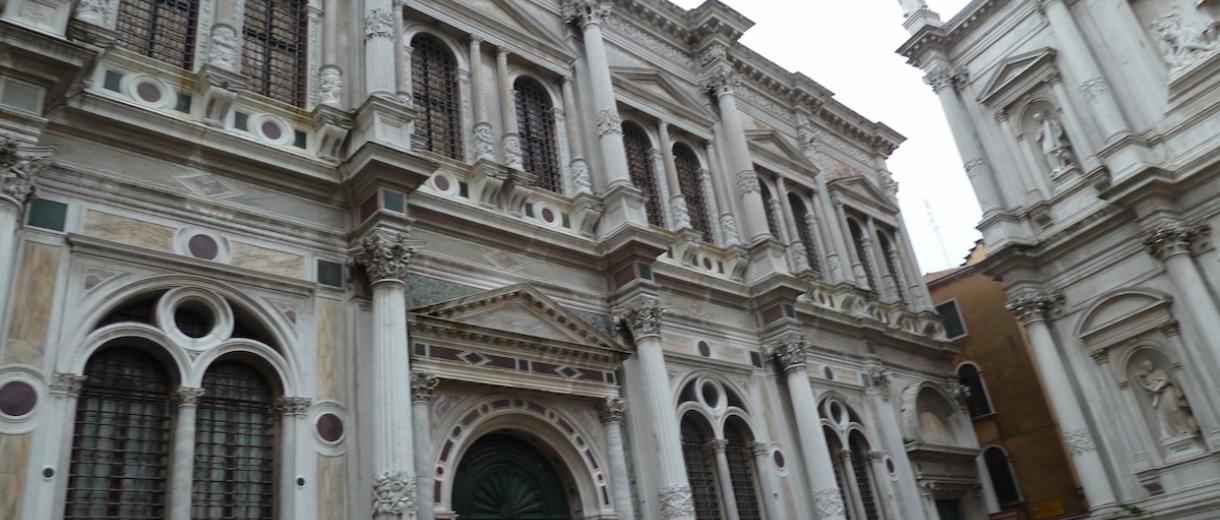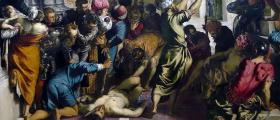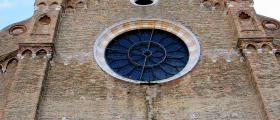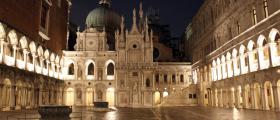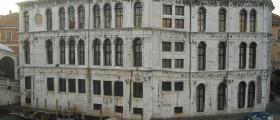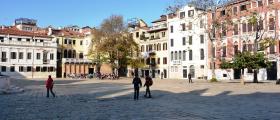Scuola Grande di San Rocco
The Scuola Grande di San Rocco, in the Sestiere di San Polo, beside the homonymous church was originally a confraternity founded in 1478 and became prosperous around 1515.
The first act made by the confraternity was the laying of the first stone of the homonymous Church, on July 16th, 1478. The Church was dedicated to Saint Rocco as a vote to save the city from the first plague in the 15th century.
The project and the built was made by Bartolomeo Bon, the works ended rapidly in 1494, and the Church was consecrated lately in 1508. It is composed by a single nave, one presbytery and two lateral chapels restructured a few times. Between 1765 and 1771 the façade has been completely modified by Bernardino Accarezzi that made it more resembling to the School one. Of the original building only the main door and the rosette remain.
The ashes of the saint are guarded inside and on August 16th, during his celebration day, a covered wooden structure to link the School and the Church together is built. This was made in memory of the vote made by the city to be saved from the plague.
Inside the church there are many artworks, paintings by Tintoretto , the saint Rocco’s statue and the monument by Pellegrino Baselli Grillo.
The school has been erected on the lands of the Santa Maria Gloriosa dei Frari and San Pantalon churches. The school project was assigned to Bartolomeo Bon in 1517 (it is thought that the study was made by his son Pietro), it was characterized by two halls, as in the majority of the Venetian Schools. The Architect was changed several times, Sante Lombardo in 1524, Antonio Abbondi in 1527 and last Gian Giacomo de Grigi from 1558 to 1560.
The access, direct from the square, leads to the ground hall, made by three naves, from here to the upper hall by a” tributale” staircase. The upper staircase was characterized by a wooden altar and it was the place where the confraternity meets. From here the access to the hotel hall.
The whole school is decorated by Tintoretto or his disciples, he was commissioned of the works in 1564. The “ciclo”, painted between 1564 and 1588, is as representative of Venice as the Cappella Sisitina represents Rome.
However, Tintoretto’s operas are not the only ones in the School, many are the works of Francesco Palma il Giovane and Titian.
The School is open every day except on New Year's Eve, Easter and Christmas.

